Horticulture 4.0: Time to play to India’s strengths
India should leverage its strengths in horticulture for exports through sustained efforts at value addition & market diversification, establishing farm-to-fork traceability and enabling a robust market intelligence framework.
- Despite ranking second globally in fruits and vegetables production, India’s share in global exports amounts to a meagre 1.7% in vegetables and 0.5% in fruits.
- Fruits & vegetables are important commodities not only because they are high in value & have a great overseas demand but also because they use less water and are crucial for sustainable farming.
- To boost exports, India needs to tackle issues of consistency in quality, low value addition, stiff international competition, payment issues, poor market intelligence and lately, supply chain disruptions due to COVID-19.
- These can be overcome by establishing farm-to-fork traceability, securing GI tags, creating linkages between farmers & exporters and harmonization of food safety standards.
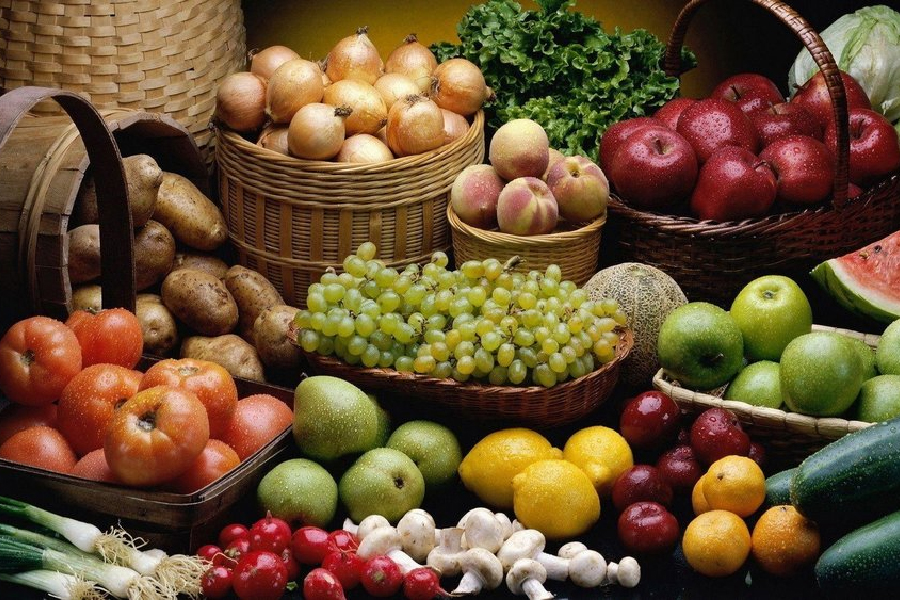
Image Credit : https://bit.ly/362hGmz
In 2018, the Word Trade Organization ranked India as the world’s 8th largest exporter of agricultural commodities. Of the total exports of agricultural products by India, around 35% is constituted by horticultural goods. This is intriguing because India ranks second in fruits and vegetables production in the world, after China. Its horticultural production in 2019-20 was estimated to be around 320.48 million tonne according to the Department of Agriculture, Cooperation and Farmers Welfare.
Fruits production is estimated to be 99.07 MT (against 97.97 MT in 2018-19); while vegetable production is estimated to be around 191.77 MT in 2019-20 (compared to 183.17 MT in 2018-19). Albeit India produces higher volumes of fruits & vegetables over cereals, it is the latter which are exported primarily by India.
Another astonishing fact is that India exports fruits and vegetables to over 70 nations across the world, with agriculture’s contribution to GDP being 30.4%. Bangladesh, UAE, Netherland, Nepal, Malaysia, UK, Sri Lanka, Oman and Qatar are the top destinations for Indian fruit and vegetable exporters. Paradoxically though, India’s share in global exports amount to a meagre 1.7% in vegetables and 0.5% in fruits as per a 2017 World Bank report.
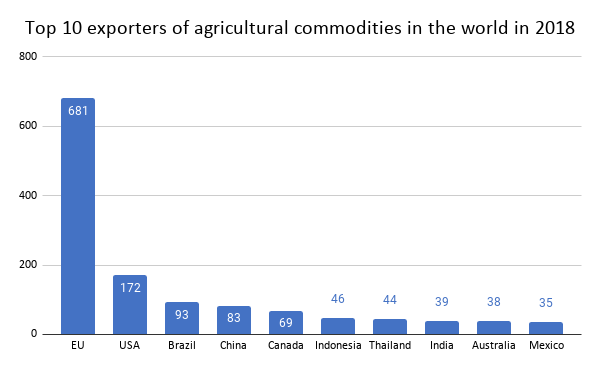
Source: WTO (All figures in US$ billion)
Jigsaw puzzle: Identifying the stumbling blocks in Indian horticulture
Indian horticultural exporters face a number of challenges while tapping overseas markets. One of the key hurdles is the mismatch with quality standards set by international markets like the United States and European Union. For example, in May 2014, EU blocked imports of Indian mangoes until December 2015 after inspectors found some consignments of the fruit to be infested with fire flies. Sustained engagements in such matters are needed to match specific products with market expectations. For instance, Australia has granted market access for Indian pomegranates recently, and approved an additional facility for the exports of Indian mangoes.
It is evident that India has not yet fully explored its export potential for fruits and vegetables. While the country currently exports fruits worth US$ 784.7 million, it has an untapped export potential worth US$ 1.3 billion, according to the ITC Trade Map. UK, Netherlands, Germany & US are offering the highest untapped export potential for fruits. The same holds true for vegetables, where India has an estimated untapped export potential worth US$ 1.1 billion. US, UAE, Vietnam, Malaysia and Sri Lanka offer the most untapped export potential for vegetables.
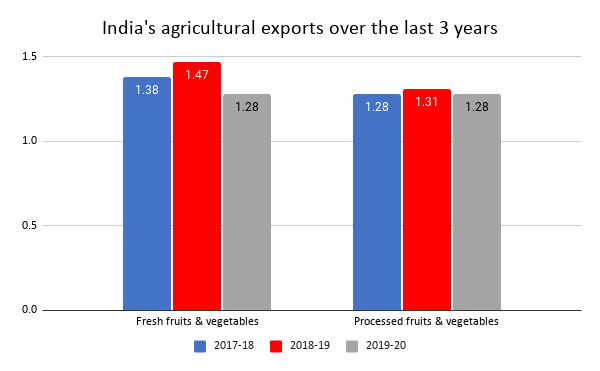
Source: APEDA (All figures in US$ billion.)
Top 5 markets with greatest potential for India’s vegetable exports
| Market | Top products with untapped potential |
| USA | Onions & shallots (US$ 38 mn); Tomatoes (US$ 2.7 mn); Peppers (US$ 2.6 mn); Garlic (US$ 1.2 mn); Sweet corn (US$ 845 k) |
| Vietnam | Onions & shallots (US$ 59.9 mn); Potatoes (US$ 11.5 mn); Mushrooms (US$ 1.7 mn); Cabbages (US$ 160.5 k); Peppers (US$ 149.8 k) |
| UAE | Onions & shallots (US$ 27.6 mn); Potatoes (US$ 9.2 mn); Garlic (US$ 961.1 k) & Cabbages (US$ 185.6 k) |
| Malaysia | Onions & shallots (US$ 32 mn); Capsicum (US$ 60.6 mn); Dried mushrooms (US$ 561.7 k); Cabbages (US$ 459.7 k) |
| Sri Lanka | Onions & shallots (US$ 56.1 mn); Capsicum (US$ 57.2 mn); Potatoes (US$ 9 mn); Dried mushrooms (US$ 4.3 k); Sweetcorn (US$ 3.5 k) |
Source: ITC Trade Map
Top 5 markets with greatest potential for India’s fruit exports
| Market | Top products with untapped potential |
| UK | Grapes (US$ 46.1 mn); Guavas, mangoes & mangosteens (US$ 19.8 mn); Bananas (US$ 17.3 mn); Coconuts (US$ 1.5 mn); Peaches, pears, papayas, etc, (US$ 1.9 mn) |
| Netherlands | Guavas, mangoes & mangosteens (US$ 36 mn); Bananas (US$ 6.3 mn); Grapes (US$ 4.2 mn); Watermelons (US$ 1.5 mn); Oranges (US$ 1.6 mn) |
| USA | Grapes (US$ 74 mn); Guavas, mangoes & mangosteens (US$ 13.8 mn); Coconuts (US$ 8.5 mn); Bananas (US$ 6.5 mn); Peaches, pears, papayas, etc. (US$ 5.1 mn) |
| Germany | Grapes (US$ 17.1 mn); Guavas, mangoes & mangosteens (US$ 33.9 mn); Bananas (US$ 10.4 mn); Grapes (US$ 5.9 mn); Peaches, pears, papayas, etc. (US$ 4.6 mn) |
| Thailand | Grapes (US$ 32.6 mn); Guavas, mangoes & mangosteens (US$ 3.7 mn); Apples (US$ 976.2 k); Melons (US$ 884.0 k); Grapes (US$ 178.8 k) |
Source: ITC Trade Map
Moreover, there’s little value addition being done to these fruits and vegetables. It is estimated that currently, share of high value and value-added agri produce in India’s agri-export basket is less than 15%, as compared to 25% for US and 49% for China. This is attributed to factors like weak processing infrastructure, lack of farm-to-fork traceability of products, relatively unskilled labour force and lack of last mile connectivity along the food production & distribution chain.
These challenges go on to accentuate the costs borne by exporters according to the World Bank (2017). It states that it costs US$ 790 to transport 1 metric tonne of grapes from India to Netherlands. This is about three times higher than the cost in transporting the same from Chile – which is twice as far from the Netherlands as compared to India!
Another problem that exporters face pertains to receiving payments for their consignments. Mrs.Priyanka Singh, Director, Taj Agro explains, “Most of the companies in Europe do trade in Letter of Credit (LC) and bank guarantee. This creates an issue for small agro companies based in India in terms of pricing, assured payment and creation of an active banking channel.”
In addition, Indian exporters face stiff competition in international markets. ICRIER notes that globally there is a growing preference for coloured varieties of table grapes. In markets like the EU, India is competing with countries such as South Africa and Chile, whose grapes have a longer shelf life and hence better price realisation. This is likely to adversely affect the prices and quantity of export by India in the future.
Further, COVID-19, too played the Shakespearean villain for the sector. As ICRIER’s Dr. Arpita Mukherjee notes:
India went into a sudden lockdown due to which the perishable export supply chain was disrupted, leading to wastages. Air freight globally went through significant disruption and that adversely affected horticulture exports. While government across countries have tried to minimise the disruptions in food supply chains, some have started implementing more rigid food safety measures.
Finding the missing pieces
In order to boost India’s horticulture, market intelligence is key, on what kind of products are being demanded in overseas markets, which India can potentially fulfil. For example, the popularity of seedless grapes is growing in Europe. In this regard, Dr. Tarujyoti Buragohain, Associate Fellow, NCAER opines, “It is imperative to establish direct farmer-exporter linkages to produce world class good quality products.”
Speaking of quality, establishing farm-to-fork traceability would do good to Indian horticultural exporters as it will establish credibility & trust in the production process. It is also essential to educate fruit and vegetable cultivators about the need to prevent pesticide overuse and adherence to food standard parameters set by various nations. India should at the same time make a case for harmonisation of global food safety standards to minimize rejections of its consignments abroad.
Acquiring and promoting GI tags will also bode well for Indian horticulture exporters. Establishing effective agricultural brands can help farmers gain a competitive advantage in ‘buyer-driven’ global markets, as branded commodities usually fetch better price and can lead to brand loyalty. The country’s embassies abroad can act as a catalyst in guiding and promoting such products through food festivals, displays at busy airports and trade fairs.
While the government has taken up favourable initiatives like 100% FDI in food processing sector & establishing 37 mega food parks and 297 integrated cold chains to fill the gaps across the value chain, it needs to explore relevant WTO-compliant subsidies for Indian horticulture exporters to attract them towards this sector.
Lastly, horticulture 4.0 must aim at establishing farm factors. This entails not just establishing climate change resilient agriculture, but also having smart workers and smart farming, which addresses challenges like paucity of land and water. This requires bringing the fruits of technology to the marginal farmers through interventions like hydroponics (growing crops without soil using mineral nutrient solutions in an aqueous solvent) and vertical farms.







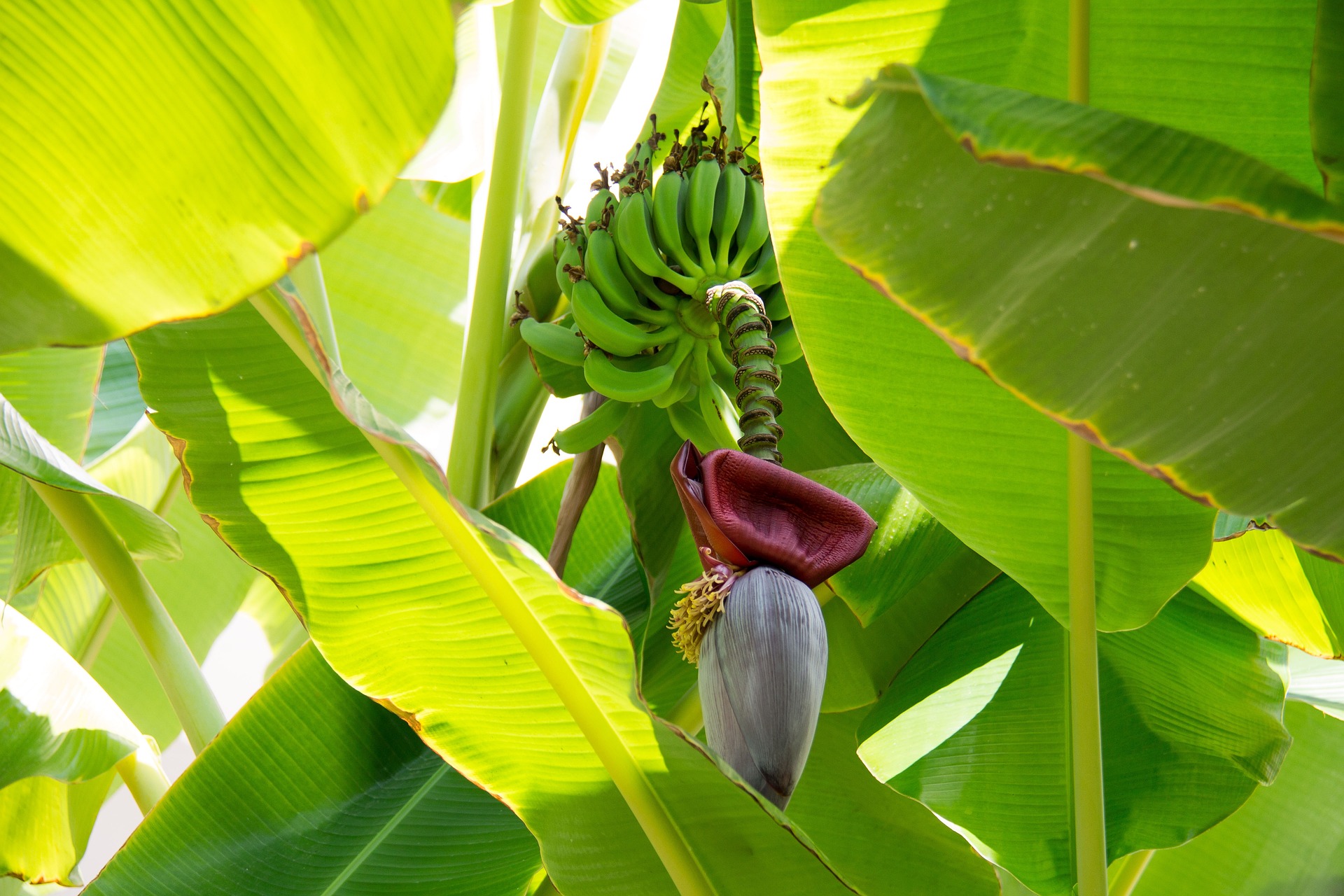

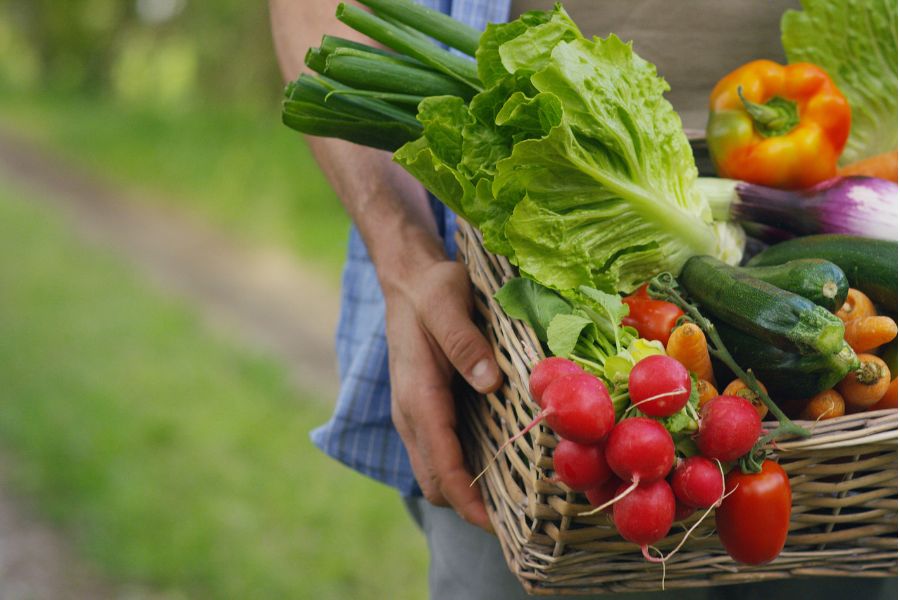



Leave a comment